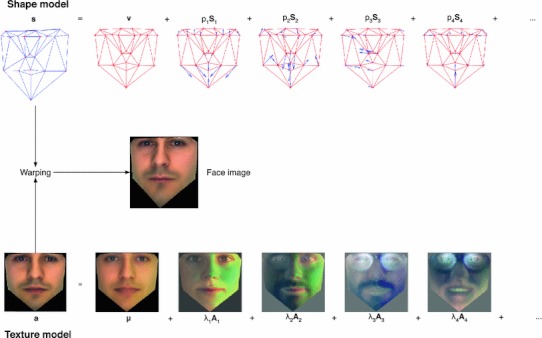Fig. 4.

Generating a face from an active appearance model. The face shape is constructed by adding a linear combination of the shape components S to the base shape

Generating a face from an active appearance model. The face shape is constructed by adding a linear combination of the shape components S to the base shape